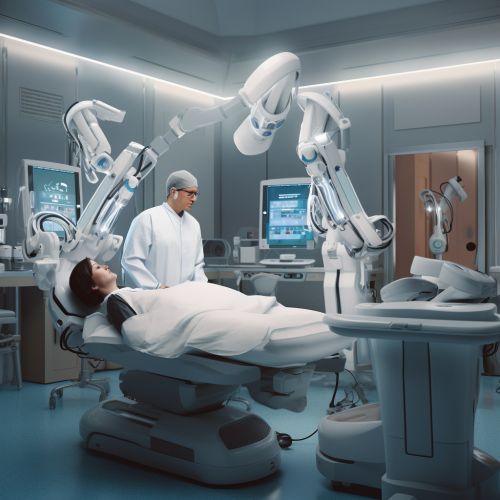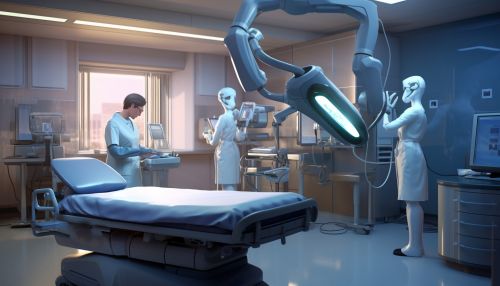Robotic Surgery and Medical Robotics
Introduction
Robotic surgery, also known as robot-assisted surgery, allows doctors to perform many types of complex procedures with more precision, flexibility and control than is possible with conventional techniques. Robotic surgery is usually associated with minimally invasive surgery — procedures performed through tiny incisions. It is also used in certain traditional open surgical procedures.
History of Robotic Surgery
The concept of robotic surgery dates back to the mid-20th century, but it wasn't until the late 1980s that the first surgical robot, the PUMA 560, was used in a neurosurgical biopsy. This marked the beginning of a new era in surgical procedures, with the introduction of the da Vinci Surgical System in 2000 being a significant milestone. The da Vinci system was the first robotic surgery system approved by the FDA for general laparoscopic surgery.


Medical Robotics
Medical robotics is a broad field that includes not only robotic surgery but also telepresence, rehabilitation robotics, and pharmacy automation. These technologies are designed to improve the precision, control, and dexterity of surgeons, enhance patient care, and improve clinical outcomes.
Robotic Surgery Systems
There are several types of robotic surgery systems, including the da Vinci Surgical System, the Zeus Robotic Surgical System, and the Medrobotics Flex Robotic System. Each system has its unique capabilities and is designed for specific types of procedures.
Advantages of Robotic Surgery
Robotic surgery has several advantages over traditional surgical methods. These include increased precision, smaller incisions, reduced blood loss, and shorter recovery times. Additionally, robotic surgery allows surgeons to perform complex procedures that may not be possible with other methods.
Disadvantages and Risks
Despite its advantages, robotic surgery is not without its risks. These include the potential for mechanical failure and the steep learning curve for surgeons. Additionally, robotic surgery procedures can be significantly more expensive than traditional methods.
Future of Robotic Surgery
The future of robotic surgery is promising, with ongoing advancements in technology expected to further improve patient outcomes. Future developments may include the integration of artificial intelligence and machine learning, which could further enhance the precision and effectiveness of robotic surgery.
